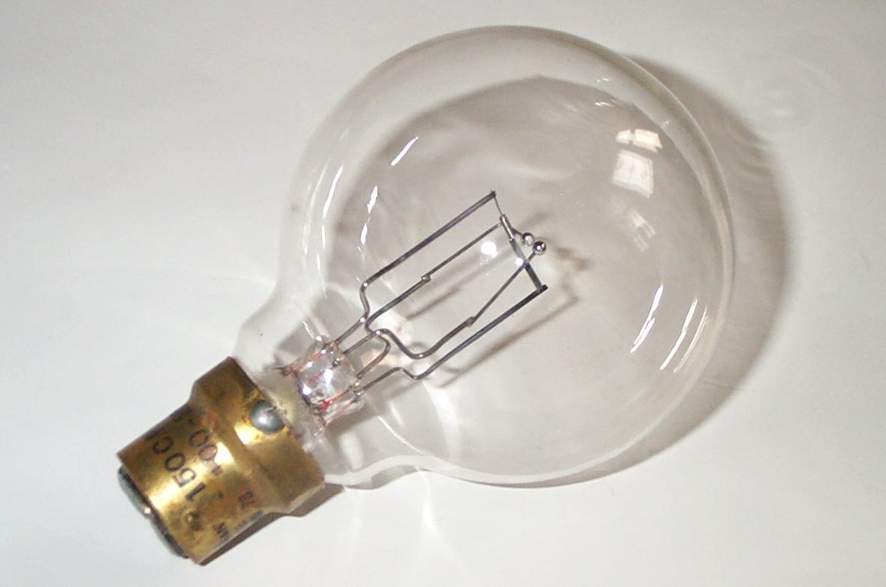
|
Royal Ediswan "Pointolite" Tungsten Arc |

Although this is an electric discharge lamp, the light is actually created by the incandescence of the electrodes and a negligible amount of light is generated by the discharge itself. Lamps were usually made for operation on Direct Current and employed a tungsten bead as the incandescent body, upon which a DC arc would terminate. This particular lamp has been made for AC operation which relies on much simpler control gear, but has lower efficacy. The bulb is filled with a low pressure nitrogen-helium mixture and the arc is struck between two tungsten beads.
For ignition purposes, a 7V tungsten filament passes near to these beads, with a fine 'ioniser' tube of thorium oxide being slipped over one tail of the filament. Ignition is carried out thus : firstly, incandescence of the filament generates free electrons around the ioniser tube. A voltage is then applied between filament and one bead and an arc is struck. Once the latter is incandescent, the voltage is then applied across both beads and both become fully incandescent. No high voltages are required, a simple rheostat being adequate. A special 4-contact bayonet cap is used here.



| Manufacturer: | Royal "Ediswan" | |
| Lamp Power: | 150 C.P. | |
| Lamp Current: | 2.0 Amps (Arc) | 7.0 Amps (Filament) |
| Lamp Voltage: | 50 Volts | |
| Cap: | BX22t/25x26 (Brass) | |
| Bulb Finish: | Clear | |
| Bulb Type: | G-75 | |
| Overall Length: | 112.5±5 mm | |
| Light Centre Length: | 75±2 mm | |
| Electrodes: | Pure tungsten spheres 0.10" diameter | |
| Atmosphere: | Nitrogen-helium mixture | |
| Luminous Flux: | 1885 lumens | |
| Luminous Efficacy: | N/A | |
| Colour Temperature: | CCT: 3000K CRI: Ra100 | |
| Chromaticity Co-ordinates: | CCx: 0.435 | CCy: 0.403 |
| Rated Life: | 300 hours | |
| Factory: | Ponders End | England |
| Date of Manufacture: | Circa 1955 | |
| Original / Present Value: | £1 10s 0d (1947) | £22.94 (2001) |
